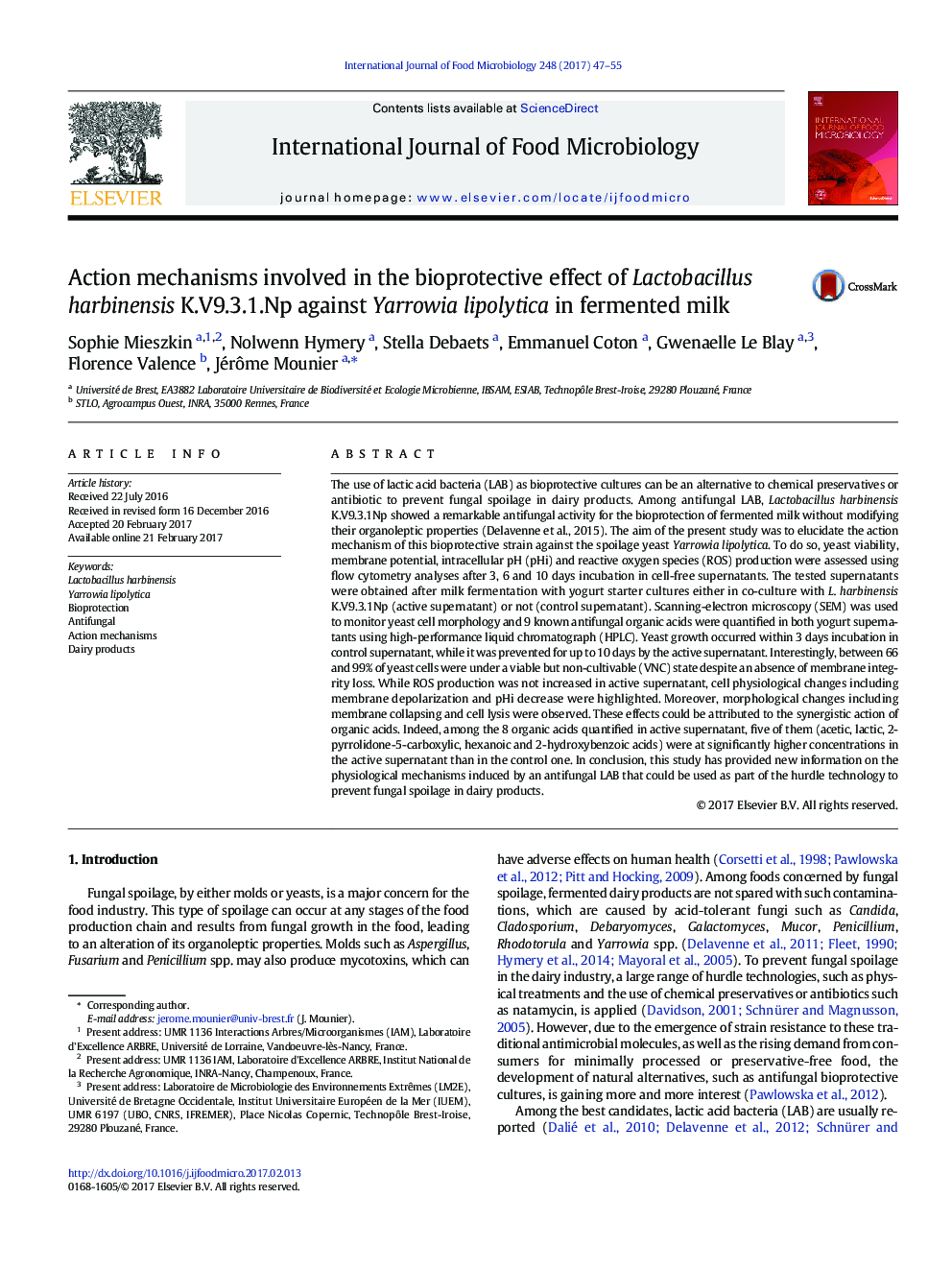| کد مقاله | کد نشریه | سال انتشار | مقاله انگلیسی | نسخه تمام متن |
|---|---|---|---|---|
| 5740789 | 1616535 | 2017 | 9 صفحه PDF | دانلود رایگان |

- The action mechanism of L. harbinensis bioprotective culture against Y. lipolytica was studied.
- The cell-free yogurt supernatant obtained with the bioprotective culture exhibited a fungistatic effect.
- Yeast membrane depolarization and pHi decrease were observed.
- Yeast cell morphological changes were observed.
- Several organic acids could be responsible for the observed antifungal activity.
The use of lactic acid bacteria (LAB) as bioprotective cultures can be an alternative to chemical preservatives or antibiotic to prevent fungal spoilage in dairy products. Among antifungal LAB, Lactobacillus harbinensis K.V9.3.1Np showed a remarkable antifungal activity for the bioprotection of fermented milk without modifying their organoleptic properties (Delavenne et al., 2015). The aim of the present study was to elucidate the action mechanism of this bioprotective strain against the spoilage yeast Yarrowia lipolytica. To do so, yeast viability, membrane potential, intracellular pH (pHi) and reactive oxygen species (ROS) production were assessed using flow cytometry analyses after 3, 6 and 10Â days incubation in cell-free supernatants. The tested supernatants were obtained after milk fermentation with yogurt starter cultures either in co-culture with L. harbinensis K.V9.3.1Np (active supernatant) or not (control supernatant). Scanning-electron microscopy (SEM) was used to monitor yeast cell morphology and 9 known antifungal organic acids were quantified in both yogurt supernatants using high-performance liquid chromatograph (HPLC). Yeast growth occurred within 3Â days incubation in control supernatant, while it was prevented for up to 10Â days by the active supernatant. Interestingly, between 66 and 99% of yeast cells were under a viable but non-cultivable (VNC) state despite an absence of membrane integrity loss. While ROS production was not increased in active supernatant, cell physiological changes including membrane depolarization and pHi decrease were highlighted. Moreover, morphological changes including membrane collapsing and cell lysis were observed. These effects could be attributed to the synergistic action of organic acids. Indeed, among the 8 organic acids quantified in active supernatant, five of them (acetic, lactic, 2-pyrrolidone-5-carboxylic, hexanoic and 2-hydroxybenzoic acids) were at significantly higher concentrations in the active supernatant than in the control one. In conclusion, this study has provided new information on the physiological mechanisms induced by an antifungal LAB that could be used as part of the hurdle technology to prevent fungal spoilage in dairy products.
Journal: International Journal of Food Microbiology - Volume 248, 2 May 2017, Pages 47-55